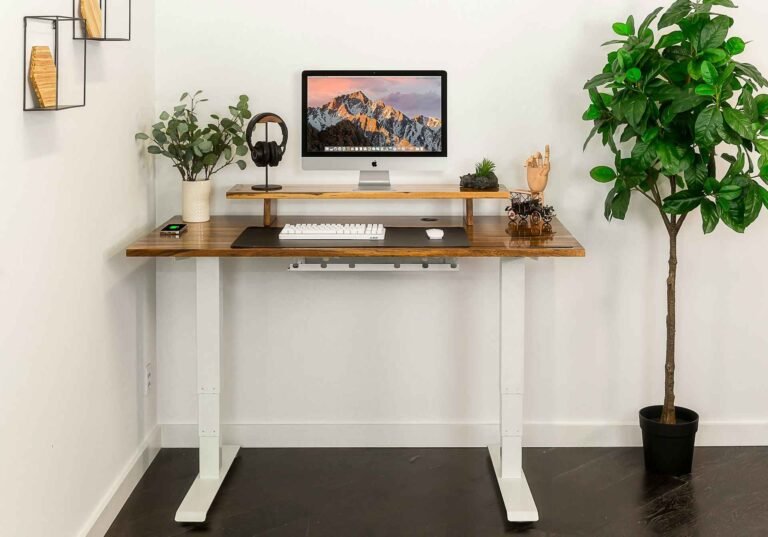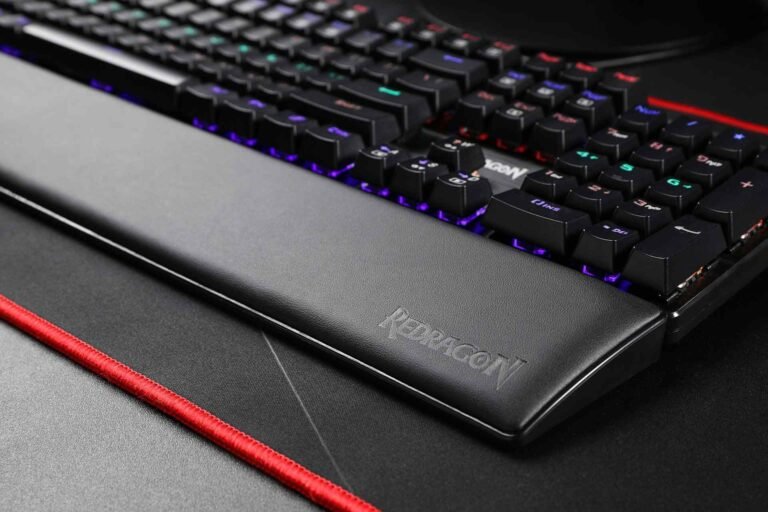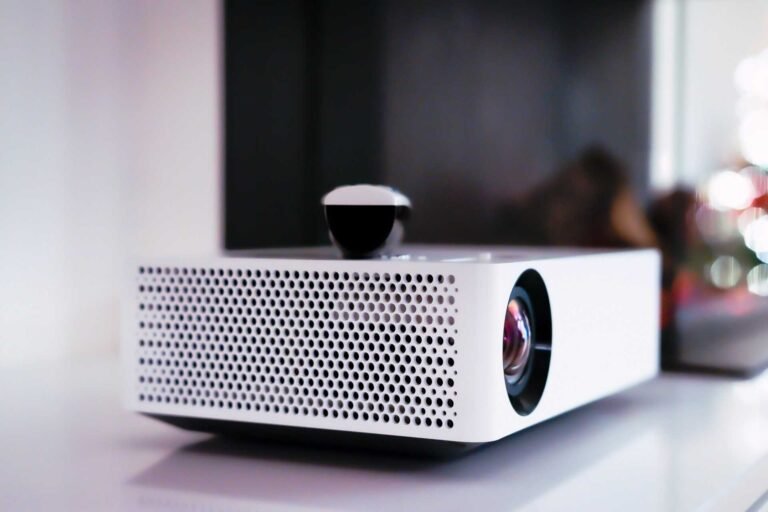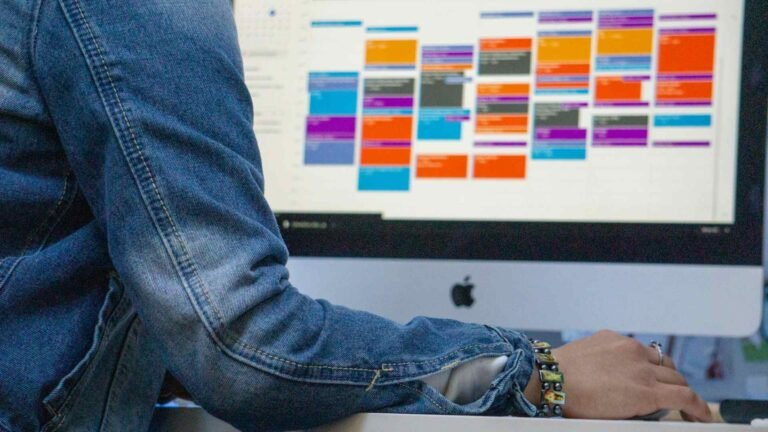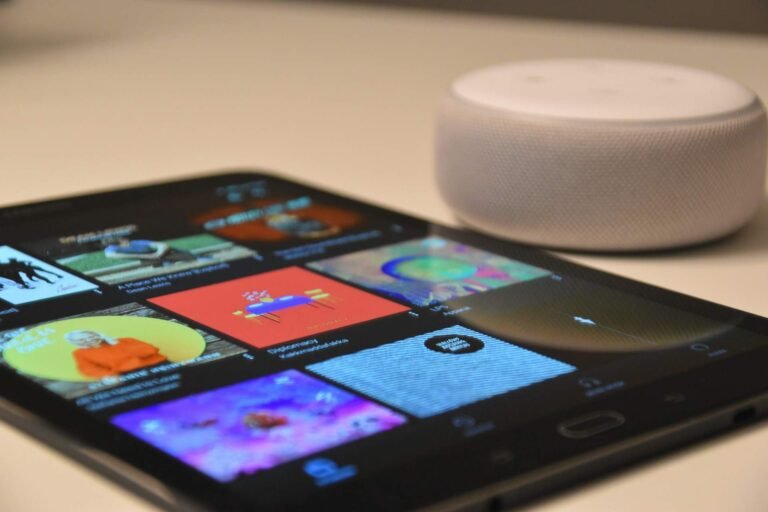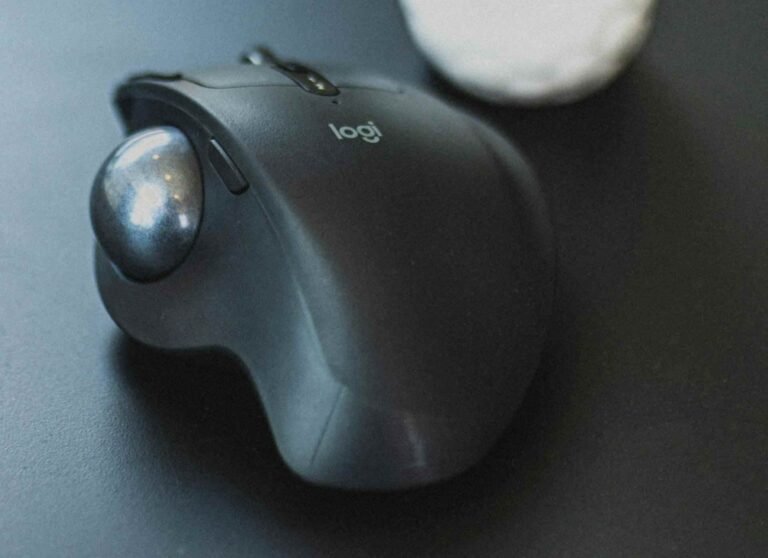10 Best Office Gadgets for Stress Relief That Actually Work
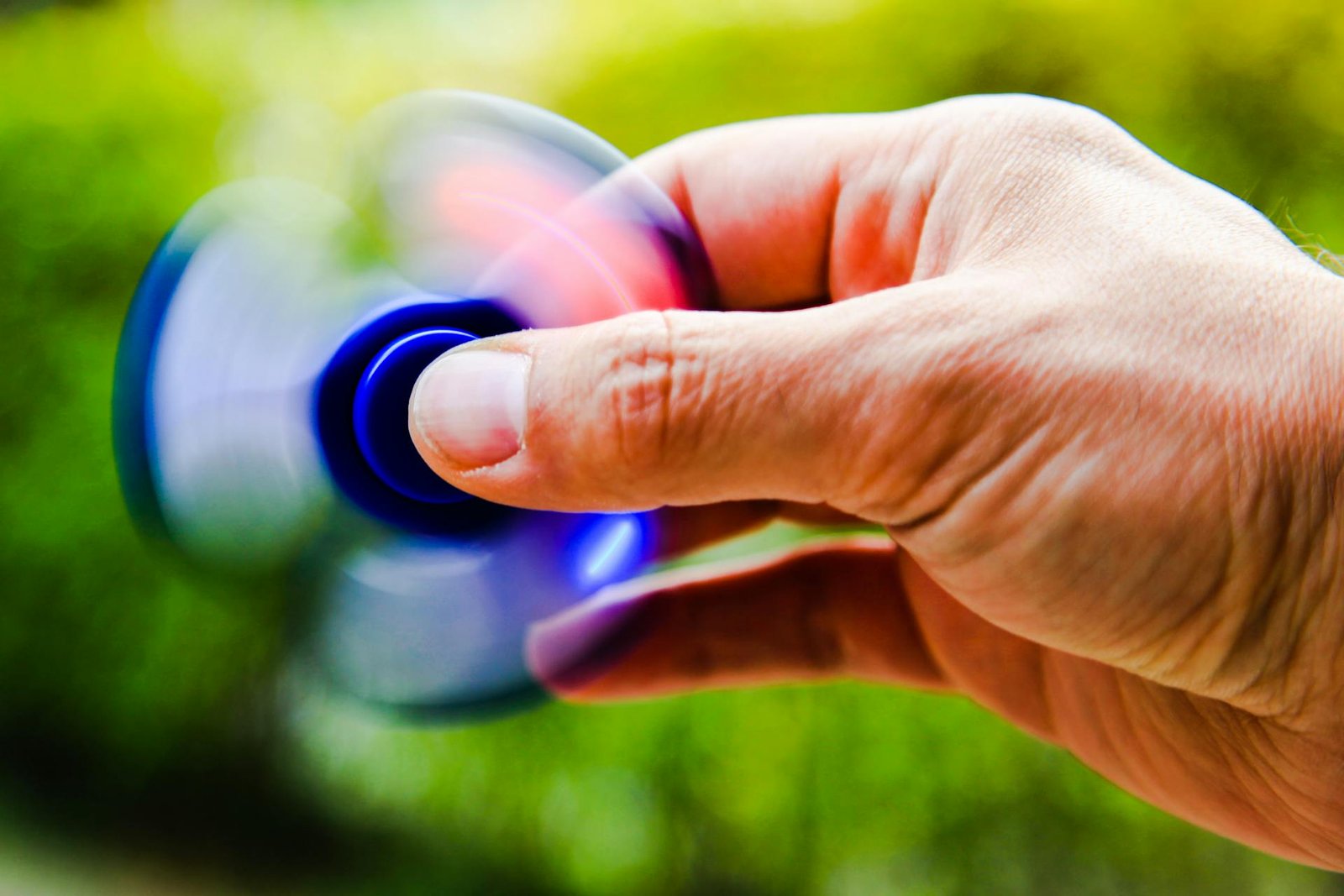
Let’s be real, work can be overwhelming. Between back-to-back meetings, looming deadlines, and that one colleague who insists on having loud phone conversations right next to your workspace, the modern office environment isn’t exactly a zen garden. While we can’t magically transport ourselves to a tropical beach during our lunch break, we can do the next best thing: keep our hands busy and our minds calm with the right office gadgets for stress relief.
These aren’t just trendy distractions (though some of them look pretty cool on a desk). They’re legitimate tools that help redirect nervous energy, improve focus, and give our overtaxed brains a much-needed breather. Whether someone’s dealing with anxiety, restless hands, or just needs something to do during those endless video calls, the right fidget toys for work can make a genuine difference in how we experience the workday.
We’ve rounded up the ten most effective office stress relief toys that actually deliver on their promises. Each one offers something unique, so there’s genuinely something here for every type of fidgeter and every workplace situation.
The 10 Best Desk Fidgets for Office Stress Relief
1. Infinity Cube Fidgets
These are the puzzle masters that never get old. Infinity cubes feature multiple interconnected blocks that fold endlessly into themselves, creating a smooth, meditative motion that’s almost impossible to put down. The satisfying flip-and-fold action keeps hands occupied without requiring much mental energy, making them perfect for phone calls or while working through complex problems.
What makes infinity cubes stand out is their silent operation, no clicking, clacking, or whirring to annoy nearby coworkers. They fit comfortably in one hand and can be manipulated with just your fingers, so they work great even during video meetings when you want to keep your fidgeting below camera level. The continuous transformation from one shape back to itself has an oddly calming effect, especially during those moments when work stress starts building.
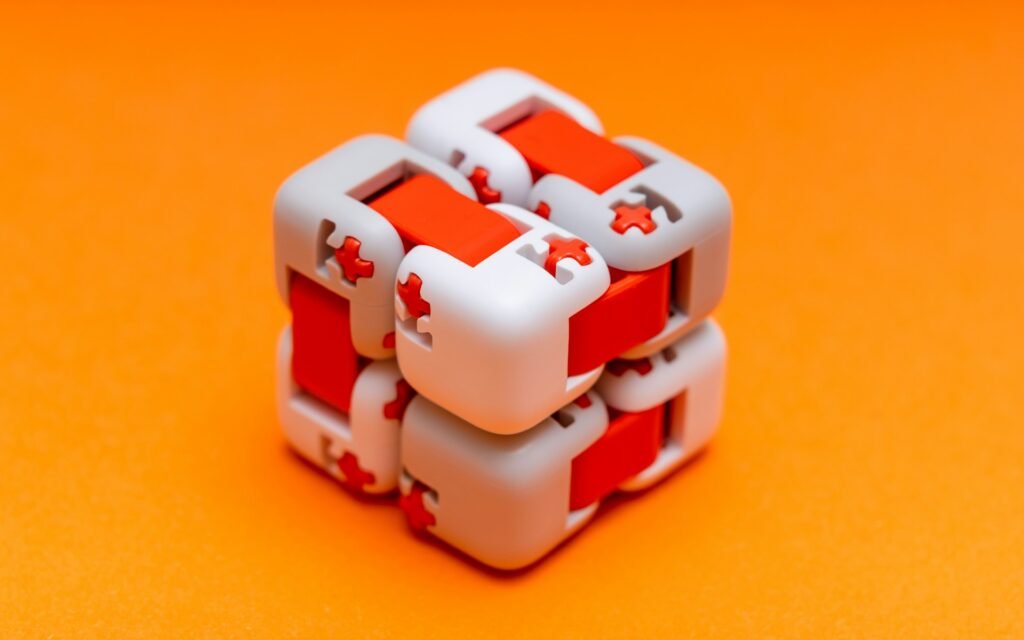
Quality versions use durable materials with smooth pivot points that can handle thousands of folds without loosening up. They’re compact enough to slip into a pocket or bag, making them reliable companions whether you’re at your desk, in a conference room, or traveling for work.
2. Handheld Rollers
For anyone whose hands feel tense after hours of typing, handheld rollers offer stress relief with a side of hand massage. These cylindrical tools with textured silicone exteriors glide between your palms and fingers, providing gentle pressure that helps ease built-up tension. The rolling motion becomes almost hypnotic, smooth, continuous, and deeply satisfying.
The real genius of these desk fidgets is how they engage your hands in full motion without requiring concentration. You can curl your fingertips around them, slide them between your palms, or roll them across any flat surface. Each movement offers slight resistance that gives your hand muscles something to work with, which can actually help with circulation and flexibility after long periods of stationary work.
Unlike some fidget tools that only offer one type of interaction, quality rollers provide multiple ways to engage. Some people prefer the slow, deliberate rolling motion for deep focus work, while others use faster movements during brainstorming sessions or creative thinking. The versatility means they stay interesting and useful long after the novelty wears off other gadgets.
3. Textured Magnetic Sensory Balls
These little spheres pack multiple stress-busting features into palm-sized packages. Textured magnetic balls combine a strong central magnet with varied silicone surfaces, creating fidget toys that offer both tactile and magnetic satisfaction. The different textures, bumpy, ridged, smooth, provide sensory stimulation that can help redirect anxious energy or skin-picking tendencies.
The magnetic component adds another layer of engagement. These balls attract and repel each other in satisfying ways, creating gentle resistance that makes manipulation feel purposeful rather than aimless. Push them together and feel them click into place, or pull them apart and sense the magnetic force resisting. It’s simple physics that somehow never stops being calming.
What makes these particularly office-friendly is their quiet operation and professional appearance. They look more like interesting desk accessories than obvious toys, which matters in more traditional workplace cultures. The compact size means you can keep several in a desk drawer, and the different textures give you options depending on what kind of sensory input you need that day.
4. Classic Fidget Spinners
Don’t let the past hype cycle fool you, fidget spinners remain genuinely useful stress toys for work when you choose quality versions. Modern spinners have evolved considerably from the squeaky, short-lived versions that flooded the market years ago. Today’s best spinners use ceramic or hybrid bearings that provide smooth, silent, extended spins that can genuinely help with focus and anxiety.
The appeal lies in their simplicity. There’s no learning curve, no complicated movements to master, no pieces to keep track of. Just a smooth, continuous rotation that provides consistent sensory input. Hold the center with one hand and give it a spin, or place it on your desk and watch the mesmerizing motion. Either way, the repetitive visual and tactile feedback can help quiet racing thoughts during stressful moments.
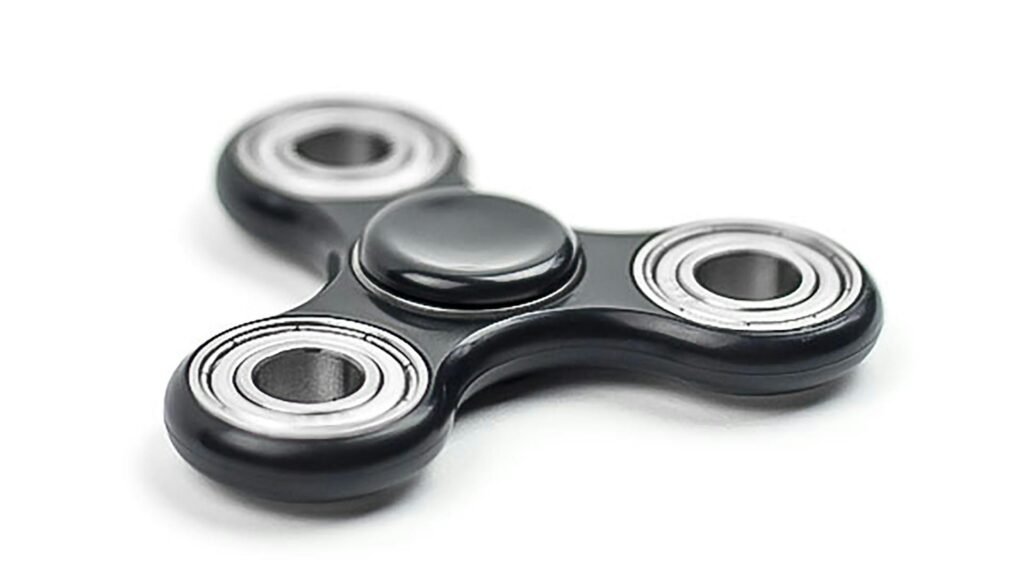
Quality matters significantly with spinners. Well-balanced designs with premium bearings can spin for several minutes on a single flick, maintaining smooth rotation without wobbling or making noise. This makes them suitable even for quiet office environments where distracting sounds would be problematic. Keep one in a desk drawer for those moments when nervous energy needs an immediate, no-thought-required outlet.
5. Modular Fidget Pens
Here’s the clever solution for workplaces where having an obvious toy might raise eyebrows: fidget pens that serve as actual writing instruments while incorporating stress relief features. These multi-functional tools include magnetic components, spinning sections, or transforming parts that provide tactile engagement disguised as a professional writing tool.
The beauty of fidget pens is their dual nature. Need to jot down notes during a meeting? They function perfectly as regular pens. Feeling stressed during that same meeting? The magnetic pieces can be rearranged, sections can spin, or the pen itself can transform into different configurations. Colleagues see someone holding a pen, nothing unusual, while you’re actually managing stress in real-time.
Many designs include removable magnetic rings or balls that can be manipulated independently before reattaching to the pen body. This gives you multiple fidgeting options from a single tool, which helps justify the typically higher price point compared to basic fidgets. For people who attend lots of meetings or work in conservative environments, these represent the perfect balance between professional appearance and genuine stress relief functionality.
6. Therapy Putty
Sometimes the most effective stress relief gadgets are the simplest. Therapy putty offers moldable, squeezable stress relief that adapts to exactly what your hands need in the moment. Stretch it, roll it, press it, twist it, the options are limited only by imagination, which keeps it from becoming boring even after extensive use.
Different resistance levels make therapy putty suitable for various needs. Softer varieties provide gentle sensory input perfect for anxiety relief, while firmer options offer genuine hand-strengthening benefits alongside stress management. The act of manipulating the putty provides deep pressure input that many people find grounding, especially during moments when anxiety threatens to spiral.
What sets quality putty apart is its consistency. It should be smooth without being sticky, firm enough to provide resistance but not so tough that manipulation feels like work. Good putty maintains its properties over time rather than drying out or becoming crumbly. Keep it in a sealed container on your desk, and it’s always ready when stress levels start climbing. Unlike some fidgets that can become monotonous, putty’s infinite malleability means every interaction can be different.
7. Textured Worry Stones
The concept of textured worry stones goes back thousands of years, people have always found comfort in smooth stones worn by touch. Modern versions take that intuition and amplify it with intentionally designed textures that provide varied sensory feedback. These pocket-sized tools are probably the most discrete fidget toys for work environments, as they can be completely hidden in your palm or pocket.
Each stone typically features multiple surface textures, ridges, bumps, smooth sections, dimples, that offer different types of sensory input. Run your thumb across the ridges for one kind of stimulation, then flip to the smooth side for a different sensation. The variety keeps them engaging without requiring the visual attention that some fidget tools demand.

Worry stones excel in situations where movement needs to be minimal. During tense meetings, important phone calls, or presentations where you can’t pull out an obvious fidget toy, a small stone tucked in your palm provides grounding without drawing attention. The repetitive motion of rubbing your thumb across textured surfaces can lower stress hormone levels and provide a focal point when everything else feels overwhelming. They’re also essentially indestructible and require no maintenance, making them reliable long-term desk companions.
8. Flexible Fidget Worms
Flexible worms and similar bendable designs offer satisfaction through their shapeshifting abilities. These office fidgets twist, coil, stretch, and bend into countless configurations, providing both tactile engagement and visual interest. The segmented construction creates satisfying resistance as you manipulate them, while the flexible core allows for creative positioning that some people find almost meditative.
What makes these particularly appealing is how they engage both hands and imagination simultaneously. Bend them into spirals, create standing sculptures on your desk, wrap them around fingers, or just twist them absent-mindedly during phone calls. The variety of possible interactions means they tend to stay interesting longer than single-purpose fidgets.
Quality matters with flexible designs, cheap versions can break at the joints or become floppy over time. Look for sturdy construction with smooth, silent movement that provides consistent resistance. The best versions maintain their shape when positioned but still move easily when manipulated, striking that perfect balance between structure and flexibility. They’re particularly good for people who like to keep their hands moving in varied patterns rather than repeating the same motion endlessly.
9. Magnetic Sphere Collections
For those who want their stress relief with a side of creative expression, collections of small magnetic spheres offer almost architectural possibilities. These sets contain hundreds of tiny magnetic balls that can be shaped, stacked, and arranged into countless structures. The satisfying click as spheres connect hits that perfect ASMR sweet spot, and the possibilities for pattern creation can keep curious minds engaged for extended periods.
The therapeutic value comes from multiple angles. The repetitive motion of connecting spheres provides rhythmic sensory input. The tactile sensation of rolling them in your palm offers texture and weight feedback. The gentle clicking sound creates audio satisfaction without being loud enough to disturb nearby coworkers. And the creative aspect, building specific shapes or patterns, engages a different part of your brain than typical work tasks, providing genuine mental refreshment.
These collections work particularly well for people who benefit from more engaging fidget experiences. While some tools work best for absent-minded manipulation, magnetic spheres reward active attention with interesting constructions. Create geometric patterns during brainstorming sessions, or simply squeeze and reshape them during focus work. Just note that these do require more desk space than pocket-sized options and need to be stored away from electronics and cards that could be affected by magnetic fields.
10. Kinetic Desk Spinners
If mesmerizing visual effects are your thing, kinetic desk spinners combine stress relief with genuine desk art. These spherical or elliptical tools create optical illusion effects when spun on flat surfaces, spiraling patterns that seem to flow endlessly inward or outward. Place one on your desk, give it a gentle spin, and watch the hypnotic effect unfold.
The visual component sets these apart from purely tactile office fidget toys. While your hands start the motion, your eyes take over as the primary sensory input, tracking the flowing patterns. This visual engagement can provide a much-needed mental break from screen-focused work, giving your brain something completely different to process. Many people find the repetitive visual motion helps reset focus, similar to how watching flowing water can be calming.
These spinners also function as conversation pieces. Their polished, sculptural appearance makes them look intentional rather than toy-like, which helps in professional environments. Colleagues often ask about them, which can lead to broader discussions about workplace stress management and wellness. The smooth, silent operation means they won’t disturb others even in quiet offices, and their compact size makes them easy to keep on even cluttered desks.
Quick Comparison Guide
To help you choose between these different fidget toys for work, here’s how they stack up across key features:
| Fidget Type | Best For | Noise Level | Visibility | Complexity | Portability |
|---|---|---|---|---|---|
| Infinity Cubes | Repetitive folding satisfaction | Silent | Moderate | Low | Excellent |
| Handheld Rollers | Hand massage and tension relief | Near-silent | Low | Very Low | Excellent |
| Textured Magnetic Balls | Varied tactile sensations | Very quiet | Low | Low | Excellent |
| Fidget Spinners | Visual focus and simple spinning | Silent | Moderate | Very Low | Excellent |
| Fidget Pens | Professional disguise with function | Silent | Very Low | Moderate | Excellent |
| Therapy Putty | Deep pressure and moldability | Silent | Low | Variable | Good |
| Worry Stones | Ultimate discretion | Silent | Very Low | Very Low | Excellent |
| Flexible Worms | Bending and creative shaping | Silent | Moderate | Moderate | Excellent |
| Magnetic Spheres | Building and pattern creation | Soft clicking | Moderate | High | Fair |
| Kinetic Spinners | Visual mesmerization | Silent | High | Very Low | Good |
This comparison helps illustrate that there’s genuinely something for everyone, regardless of what kind of sensory input you prefer or what level of discretion your workplace requires.
Why Office Stress Relief Tools Actually Work
Now that we’ve covered the specific options, it’s worth exploring why these little gadgets have become workplace staples. Most of us spend hours sitting relatively still, staring at screens, processing information at lightning speed. Our bodies weren’t designed for this level of stationary focus, which is why so many people develop nervous habits like pen clicking, nail biting, or compulsively checking their phones.
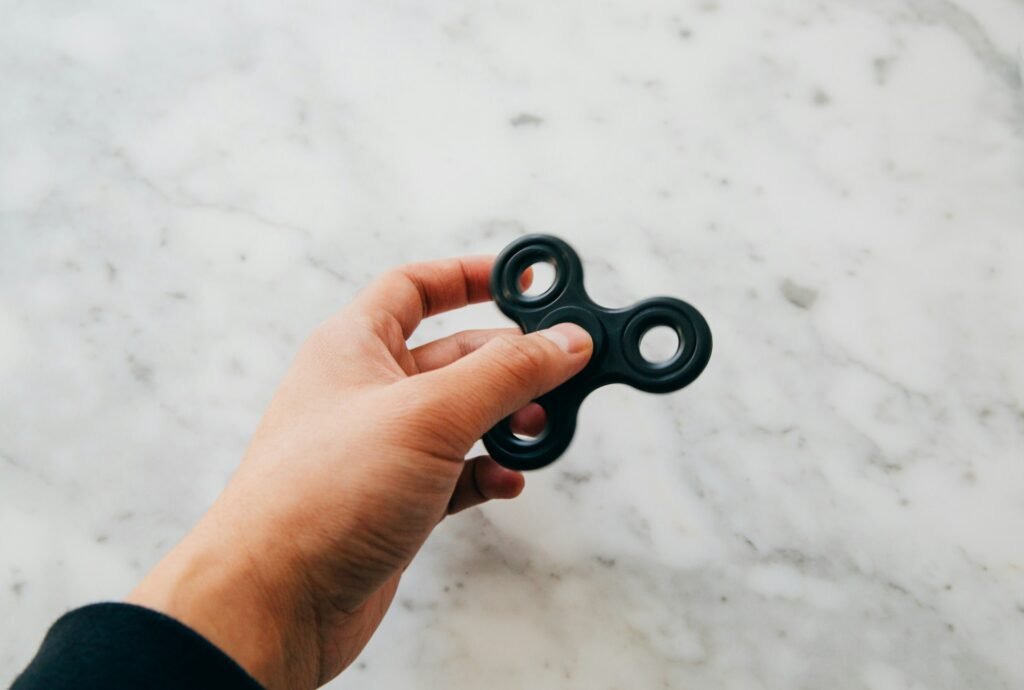
Office stress relief toys serve as productive outlets for that restless energy. When our hands are occupied with something tactile and satisfying, our minds often settle into a calmer, more focused state. It’s similar to how some people think better while pacing or how doodling during meetings can actually improve information retention.
The science backs this up too. Engaging in repetitive, low-stakes physical activity can lower cortisol levels and activate the parts of our brain associated with calm and concentration. Plus, there’s something deeply satisfying about having a small object to manipulate when we’re processing difficult information or working through a challenging problem. The physical action provides an outlet that prevents stress from building up purely mentally.
Choosing Your Perfect Desk Companion
With so many options available, selecting the right fidget toys for work desk setup doesn’t have to feel overwhelming. Here are some practical factors to consider when making your choice.
Consider Your Sensory Preferences
Pay attention to what kinds of sensations you naturally gravitate toward. Do you constantly rub your fingers together when thinking? Textured surfaces like worry stones or magnetic balls might be your best bet. Do you crack knuckles or flex your hands frequently? Something that requires gripping or squeezing like therapy putty could redirect that impulse productively.
Some people prefer smooth, continuous motions like rolling or spinning, while others need something with more variation and complexity like transforming cubes or flexible worms. There’s no right answer, only what works for your particular nervous system and the way your body expresses stress or restless energy.
Think About Your Work Environment
The perfect fidget for a private office might be completely inappropriate for a shared workspace. Silent or near-silent options are essential for most professional environments. Even the most understanding colleagues will eventually find clicking, clacking, or whirring sounds irritating during focused work time.
Size and visibility matter too. Compact options that fit in a palm or pocket are generally more versatile than larger items. If you attend lots of meetings or move between workspaces frequently, portability becomes a significant consideration. For traditional corporate cultures, tools that look more like desk accessories than obvious toys, like kinetic spinners or fidget pens, might face less scrutiny.
Match the Tool to the Task
Different types of work might benefit from different fidget styles. Deep focus work that requires minimal interruption pairs well with low-engagement options like worry stones or therapy putty that can be manipulated almost unconsciously. Your hands stay busy while your brain stays fully engaged with the primary task.
Creative brainstorming sessions might benefit from more complex, transforming fidgets that can occupy restless hands during thinking pauses. The slightly higher engagement level matches the natural rhythm of creative work, where you alternate between active thinking and processing periods.

For video calls where your hands might be visible, consider whether you want something discrete like a small worry stone or something interesting enough that it becomes a conversation piece. We’ve all seen those meetings where someone’s desk toy becomes the unexpected ice breaker that makes the whole interaction feel more human and less robotic.
Building Your Collection
Here’s a little secret: many people who successfully use fidget office toys for stress management don’t stick to just one. Different situations, moods, and stress levels might call for different tools. A textured stone might work perfectly during morning meetings when you’re still waking up, while magnetic balls provide better engagement during afternoon energy slumps.
Building a small collection allows for variety, which can prevent any single option from becoming boring or losing its effectiveness. Plus, having options means you can share when a curious colleague asks about your interesting desk gadget. You might just inspire someone else to find their own path to calmer workdays.
Making Fidgets Work in Professional Settings
Let’s address the elephant in the room: some workplaces or colleagues might view all kinds of fidget toys with skepticism. “Aren’t those for kids?” or “Can’t you just sit still?” are comments that unfortunately still pop up. Here’s how to navigate those perceptions while still getting the stress relief benefits you need.
The Discrete Approach
If your work culture leans traditional, starting with more subtle options makes sense. Items that fit completely within your palm, stay under your desk, or could pass as regular desk accessories draw minimal attention while still providing benefits. Worry stones, therapy putty kept in a desk drawer, or fidget pens all fall into this category.
Many people keep their stress relief tools in a pocket or drawer, bringing them out only when needed rather than leaving them visible at all times. This approach works especially well during phone calls or while reviewing documents, times when something in your hands helps focus without being visible to others.
The Confidence Approach
On the flip side, using your stress relief gadgets openly and confidently can actually help normalize them in your workplace. When someone asks about that interesting object on your desk, a straightforward “It helps me focus during long meetings” or “It’s great for stress relief” often satisfies curiosity without requiring lengthy justification.
This approach works particularly well in workplaces that already value employee wellbeing or have embraced other ergonomic solutions like standing desks or specialized equipment. When presented as tools for productivity and wellness rather than toys or distractions, fidgets gain legitimacy.
Creating a Comfort-Focused Workspace
Desk fidgets work even better when they’re part of a holistic approach to workplace comfort. Combining them with other ergonomic solutions creates an environment genuinely designed for focused, low-stress productivity.
Consider pairing your fidget tools with proper seating support, wrist support during typing, or proper foot positioning. Each element contributes to overall physical comfort, which directly impacts stress levels and how effectively your stress relief tools can work.

Environmental factors matter too. The office temperature can significantly affect comfort and focus, as can lighting quality. Poor lighting causes eye strain and headaches, which definitely don’t help with stress management. Making sure your workspace has adequate illumination creates a more comfortable environment where stress relief tools can work more effectively.
The Productivity Connection
For skeptical managers or colleagues, it can help to frame fidget tools in terms of productivity rather than just comfort or stress relief. When people can channel nervous energy into something productive rather than disruptive (like that annoying pen clicking we mentioned earlier), everyone benefits. Framing your stress toys for work as productivity tools rather than personal indulgences sometimes makes them more acceptable in traditional workplace cultures. You’re not asking to play with toys, you’re implementing a research-backed focus enhancement strategy.
FAQ
Do fidget toys actually help with stress and anxiety?
Yes, for many people they genuinely do. Fidget toys provide a physical outlet for nervous energy and can help activate the parts of our brain associated with calm focus. The repetitive motions and tactile sensations can lower stress hormone levels and give our minds something neutral to focus on when anxiety threatens to spiral. That said, they work best as part of a broader stress management approach that might include things like proper sleep, regular breaks, and addressing root causes of workplace stress. They’re tools, not magic solutions, but they’re effective tools when used appropriately.
Are fidget toys appropriate for professional office environments?
Absolutely, though choosing the right type matters. Silent or near-silent options that can be used discretely work well in most professional settings. Many offices have recognized that small accommodations that help employees focus and manage stress benefit everyone through improved productivity and wellbeing. If you’re concerned about perceptions, starting with more subtle options or having a conversation with your manager about productivity tools can help normalize their use. The growing awareness around neurodiversity and different working styles has made workplaces generally more accepting of tools that help people do their best work.
Will using a fidget toy distract me from my work?
This depends on the person and the tool. For most people, the right fidget toy actually improves focus rather than detracting from it by giving restless energy somewhere to go. The key is finding something that requires minimal mental engagement. You want your hands busy but your mind still fully available for work tasks. Some experimentation might be needed to find what works for your particular brain and work style. If you find yourself spending more time playing with the fidget than working, that particular tool might be too engaging for you, and a simpler option would work better.
How do I choose between so many different types of fidget tools?
Consider what kinds of sensations you naturally seek out. People who tend to pick at things might prefer textured surfaces like worry stones or textured magnetic balls, while those who pace or shake their legs might benefit from rolling or spinning motions. Think about your work environment too, shared workspaces require quieter options than private offices. Starting with one or two different types and paying attention to which you actually reach for will guide future choices. There’s no need to invest in every type right away when targeted selection based on your preferences will serve you better.
Can fidget toys help with conditions like ADHD or autism?
Many people with ADHD, autism, or other conditions that affect sensory processing and focus find fidget tools genuinely helpful. They provide appropriate sensory input that can make it easier to maintain attention and regulate emotional states. However, what works varies significantly between individuals, and these tools should complement rather than replace any professional support or treatment. Experimenting with different options helps identify what provides the most benefit for specific needs. Some people need more intense sensory input, while others prefer subtle engagement.
How many different fidget toys should I have?
There’s no magic number, but having a few different options prevents boredom and allows you to match the tool to your current need or mood. Some people rotate between two or three favorites, while others collect larger varieties. Start with one or two and add more only if you find yourself wishing for different features or sensations. Quality over quantity applies here, a few well-chosen tools you actually use beat a drawer full of forgotten gadgets. Pay attention to which ones you naturally reach for and which gather dust, then adjust your collection accordingly.
Wrapping Up: Finding Calm in the Chaos
The modern workplace throws a lot at us, constant connectivity, competing demands, and the pressure to stay focused for hours on end. While office gadgets for stress relief can’t solve every workplace challenge, they offer a simple, effective way to manage the physical manifestations of stress and channel restless energy productively.
The right fidget toys for work desk arrangements aren’t about being trendy or childish, they’re about recognizing that our brains and bodies function better when we work with our natural tendencies rather than against them. If having something to occupy your hands helps you think more clearly, process information better, or stay calmer during stressful moments, that’s not a weakness. It’s self-awareness and smart adaptation.
Whether you go for the satisfying folds of an infinity cube, the smooth roll of a handheld massager, the moldable comfort of therapy putty, or the mesmerizing spin of a kinetic desk toy, the goal remains the same: finding small moments of calm within busy workdays. These little tools remind us that taking care of ourselves, even in tiny ways, directly impacts how effectively we work and how well we handle everything the job throws at us.
So go ahead and give yourself permission to fidget. Your stress levels (and probably your productivity) will thank you for it. And who knows? You might just inspire a few colleagues to find their own perfect desk companion along the way. After all, a calmer, more focused workplace benefits everyone, one little fidget at a time.
Looking for more? Check out our productivity tools category for more articles and guides that may interest you!
Featured image credit: Photo by Tanino on Pexels
This content is for informational purposes only. Please verify current information directly on the retailer’s site before purchasing.

